When mechanical engineer Lothar Schmidt took control of the Frankfurt-based Sinn watch brand in 1994, he planned to use his technical knowledge and add innovative technologies to Sinn’s watches to enhance their functionality. The brand was founded in 1961 by pilot Helmut Sinn and sold pilots’ watches using Swiss private-label products. Schmidt renamed the firm Sinn Spezialuhren (Special watches) and the new company developed its first watch, manufactured with its own tools, in 1994. Model 244 had magnetic-field protection and a freely oscillating suspended movement. In 1995, Sinn premiered a 22k gold watch fabricated from a newly created alloy that made the precious metal as scratch resistant as stainless steel. That same year, Sinn introduced its complex Ar-Dehumidifying Technology for divers’ watches in the 203 Ti Ar. Other innovations soon followed. Schmidt transformed the brand into a company with its own technology, its own tools and its own development department. The private-label era was over.
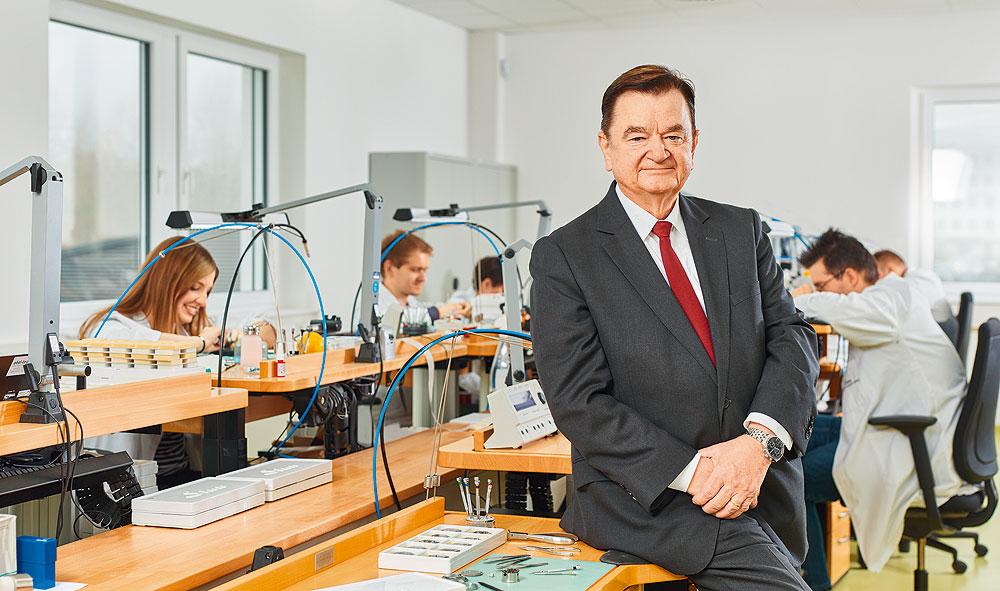
Schmidt entered the watch industry in a roundabout way. After earning a degree in engineering and serving in the German military, he started working at an engineering plant in La Chaux-de-Fonds. In 1976, he joined the Bräuchy case factory, also in La Chaux-de-Fonds, as a technical director. But he wanted to return to Germany, so in 1981 he applied for a position at VDO, a German company that makes parts for automobiles. VDO had recently purchased Jaeger-LeCoultre and IWC and the firm was glad to hire someone with experience in case manufacturing. So Schmidt joined IWC in Schaffhausen, first working in the production and development divisions and later serving as a director. He stayed until 1994, when he took control of Sinn.
In addition to developing new watches, Schmidt retained some of the Sinn models that had been particularly successful. Model series 103, 140, 144 and 903, which are still in the brand’s current collection, were manufactured using Sinn’s own tools. They were given their final polishing, upgraded to state of the art and gradually equipped with Sinn technologies.
In subsequent years, Sinn developed Einsatzzeitmesser (mission timepieces), or EZM, which were specially made for professionals, including pilots, divers, firefighters, paramedics, rescue teams and special units of the German police, armed forces and navy.
The focus at Sinn was always on function. Everything unnecessary was left out. Clearly recognizable hands and indexes with plenty of luminous material formed the basis for good legibility. At the same time, Sinn developed technologies that made the brand’s watches even more robust and readable.
Ar-Dehumidifying Technology
One of Sinn’s most complex and innovative techniques is its Ar-Dehumidifying Technology, originally developed to prevent fogging on the underside of the crystals of its divers’ watches. This is caused by extreme temperature change, such as plunging into cool water on a hot day. Moisture condenses on the lower surface of the watch crystal and the fogging that results makes it hard to read the watch.
The technology is based on improved insulators, filling the watch with protective gas and stay-dry capsules. The insulators are made from Viton, a green material that lasts longer than the black nitrile insulators commonly used. It admits four times less gas and humidity into a watch’s interior than nitrile insulators and resists chemical corrosion better. Viton is also used for the two O-ring insulators and the flat seal for the crown. If an insulator is not available in the desired size, Schmidt will make the investment and build the tools to make it.

Ar-Dehumidifying Technology got its name because the case was originally filled with argon (Ar), a noble gas with large molecules. Now Sinn uses nitrogen. The case is filled with a protective gas because the gas’s presence makes it more difficult for humidity to penetrate the case. The protective gas has a lower dew point, so moisture doesn’t begin to condense until much later.
If, despite the improved insulators and the protective gas, humidity still gets into the case, then the moisture is absorbed by powdered copper sulfate inside built-in desiccant capsules. A viewing window lets the wearer see whether the capsules are still absorbent (white) or already saturated (blue) and need to be replaced. On newer models, the viewing window is placed prominently on the dial at 6 o’clock rather than in the case. This change affords additional security because it eliminates one extra opening in the case. The newest version of the technology includes three additional desiccant capsules in the back or in the movement-holder ring.
The dry atmosphere inside the case lengthens the lifespan of the lubricant oil and helps prevent corrosion in the movement.
Temperature Resistance Technology
The rate of a mechanical watch worsens rapidly if the temperature gets hotter than 30° C (86° F). Cold conditions, on the other hand, make lubricant oil so viscous that chilled watches will eventually stop running entirely. With its Temperature Resistance Technology, Sinn has found a way to guarantee the proper functioning of its watches even when they’re exposed to temperatures from the frigid cold of -45° C (-49° F) to the sweltering heat of +80° C (176° F). Here, too, Schmidt relies on a technique with several components. The most important ingredient is special oil that maintains an unchanged viscosity throughout a much wider temperature range than conventional lubricant oils. Sinn sends this oil to ETA and Sellita to use to lubricate the movements destined for Sinn. The oil is equally suitable for the pallet jewels, the gear train and the balance’s bearings.

Hydro Technology
The Hydro technology Sinn uses for its divers’ watches ensures that their crystals are not susceptible to fogging, their dials uphold optimal legibility under water and their cases resist pressure down to every conceivable depth. For Hydro technology, which is used in watches in the UX series, the case is filled with a colorless nonconductive liquid, whose specifications Sinn won’t reveal.
Two problems arise when a watch is filled with liquid. First, liquids expand when heated, so the backs of the cases of Sinn’s current models are built from several parts and the inner part can move slightly outward to compensate for the larger volume of warmed liquid. The second arises because liquid has a much greater density than air, so fluid would exert too strong a braking effect on the balance in a mechanical movement. Therefore, Hydro technology can only be used with quartz calibers. Tests performed with Sinn’s extreme-pressure device have shown that the capsule containing the vibrating quartz crystal is sometimes squeezed at depths below 6,500 meters, causing the watch to stop running. Therefore, Hydro watches are suitable for dives “only” to a maximum depth of 5,000 meters.
This extreme pressure resistance is only one advantage of Hydro technology. The liquid that Sinn uses has the same refractive index as sapphire crystal, so the watch can be read underwater from any viewing angle. And the crystal never fogs up: condensation cannot occur because there is no air inside the case.

Tegiment Hardening
Impacts against rocks or equipment are nearly unavoidable during rigorous missions underwater or on dry land. Here, too, Schmidt wanted to improve functionality. To make its watch cases less susceptible to scratches, Sinn uses a technique called “tegimenting.” The case is sent to a specialist in Germany, where a “Kolsterising” method is used to harden the steel on and near the metal’s surface. This hardening is not a coating: the steel itself is transformed into a protective sheath.
Creating the scratch-resistant surface means that the hardened cases cannot be processed using conventional methods. Sinn’s watch cases are built by Sächsische Uhrentechnologie GmbH Glashütte (SUG), where Schmidt is a co-founder and majority shareholder, but he prefers to keep all aspects of the tegimenting process at Sinn. So there’s a dedicated room in Sinn’s Frankfurt facility, equipped with the necessary machinery, where processing methods are developed and utilized.
Tegiment technology works well with 316L stainless steel, the steel alloy that’s most commonly used in the watch world. But this method can achieve even better results with harder 904L steel, which is more resistant to corrosion by saltwater and which Sinn uses in its divers’ watches. “Submarine steel,” developed by the German submarine-building industry, achieves the hardest surface when tegimented. Sinn even uses the tegimenting technique with titanium. A tegimented case also serves as a good material to be coated with ultra-hard black PVD.
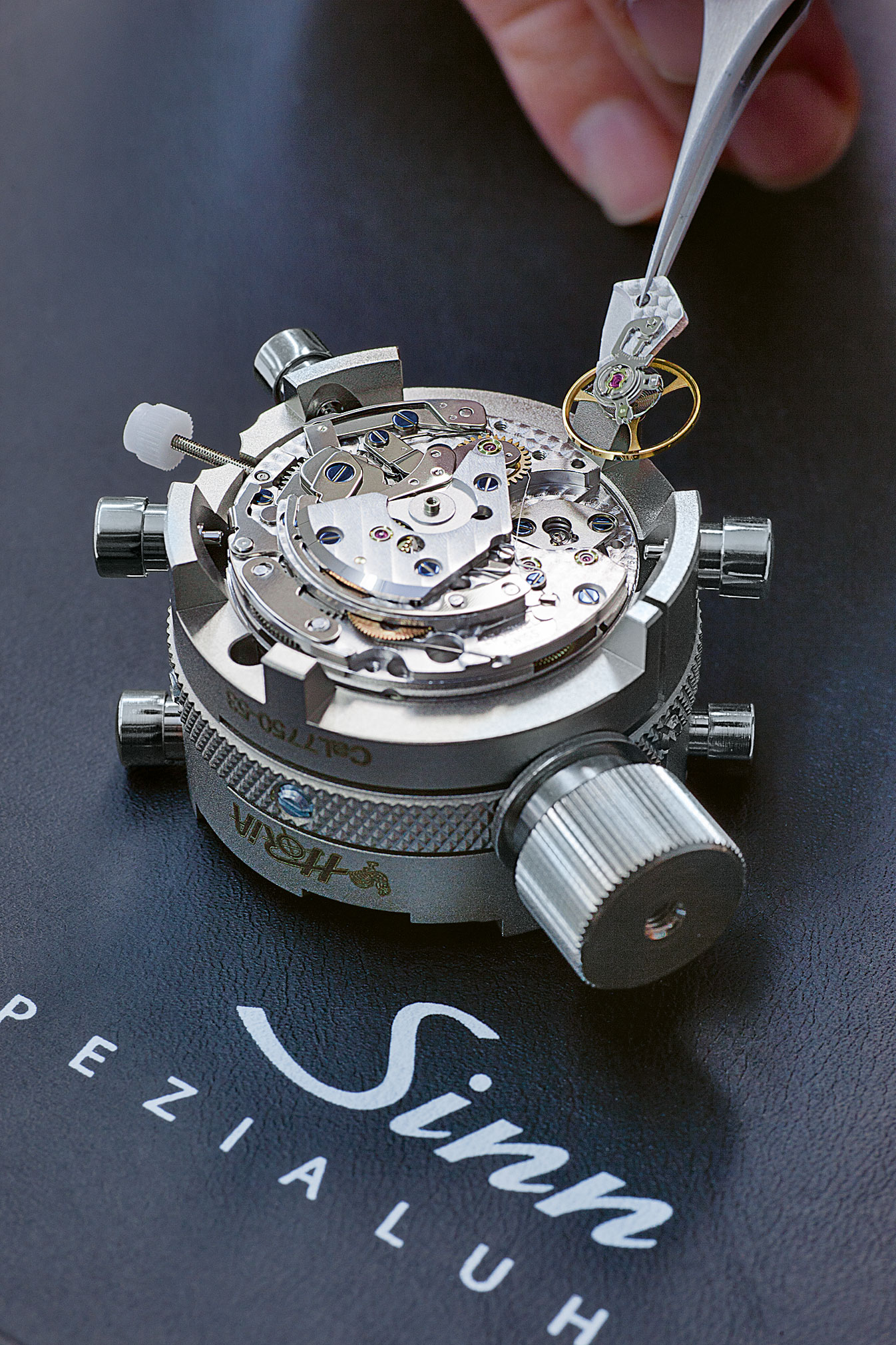
Anti-reflective Treatment
The crystals above the dials of most Sinn watches are made from sapphire. Glaring reflections may detract from legibility, so Sinn, like many other manufacturers, has its crystals anti-reflectively treated. But the coatings often have a bluish tinge and scratch easily. Schmidt looked for a solution and found one in a different sector: namely, coatings applied to the surfaces of optical equipment lenses and eyeglasses. The method, while costly, results in an anti-reflective coating that is nearly colorless and almost as hard as its sapphire substrate. Sinn uses this coating on models that are equipped with other in-house technologies.
Safeguarded Against Low Pressure
A little-known technology guarantees that all of Sinn’s models are secured against low pressure. If a pilot is cruising at an altitude of 12,000 meters (39,370 feet) and a sudden explosion tears an opening in the aircraft’s pressurized cabin, the pressure aboard the airplane will decline abruptly. Suddenly, the pressure inside the pilot’s watch will be higher than the pressure in the environment, so the excess internal pressure can cause the crystal to burst. Sinn uses special construction methods to keep its watches from breaking under such conditions, but will not reveal any details.
How well this technology functions was shown in 2014, when Robert Alan Eustace wore a Sinn 857 UTC TESTAF on his wrist during a sky dive from the stratosphere. He leapt from an aircraft at an altitude of 41.4 kilometers (about 25.7 miles) and plunged into the extreme low pressure and frigid cold (-77° C or -106.6° F) of the stratosphere. In the course of his freefall, he broke the sound barrier and continued to accelerate until he reached a maximum speed of 1,322 kilometers per hour (821.5 miles per hour).

Resistance to Saltwater Corrosion
Another danger for watches lurks in the ocean: salt. Watch cases are usually made from non-rusting stainless steel, but this doesn’t mean that they won’t corrode. Prolonged exposure to saltwater, especially in combination with warmth, can gradually corrode the surface. Divers’ watches should be resistant to corrosion by saltwater; the degree of resistance is expressed by the PRE value. (“PRE” stands for “pitting resistance equivalent.”) A watch with a PRE value of 32 is rated as resistant to saltwater. Higher PRE values are more resistant. The steel most frequently used for watch cases, the 316L alloy, has a PRE value of 24, so if these cases have been immersed in saltwater, they should be rinsed with freshwater afterward. Sinn is increasingly using 904L steel, which has a PRE value of 35 and is highly resistant to corrosion by saltwater.
Sinn uses submarine steel for the cases of many of its divers’ watches. This steel has a PRE value of 39. Other favorable characteristics are its strength and its special elastic behavior, which keeps submarines from springing leaks. It cannot become magnetized, and Sinn gives the metal its tegiment treatment for scratch resistance. Titanium is even more saltwater resistant: it doesn’t react to seawater at all. Sinn uses titanium in its T1 and T2 divers’ watches.

Secured Rotatable Bezel
A typical rotatable bezel is merely pressed onto the case from above. To remove it, a watchmaker simply pries it upward until it snaps off the case. But a watch can lose such a bezel, for example, when a diver snags his watch on a submerged rock. To prevent this, Sinn developed the “impossible-to-lose” rotatable bezel. A clamping ring is fit into a groove in the bezel and then pressed into a matching groove in the case, where it is affixed by three screws. The connection is secure, but it also can be easily released.
The secured rotatable bezel, which Sinn uses on its T1 and T2 divers’ watches, also offers protection against unintentional resetting of the dive-time scale. Before beginning a dive, the diver turns the bezel until its luminous index is opposite the tip of the minutes hand; afterward he can see how long he has been underwater by glancing at his watch. If his diving computer malfunctions, he can use his bathometer and the dive-time scale on his watch to estimate approximately when he needs to begin swimming upward without having to interrupt his ascent for a decompression stop.
For safety’s sake, the bezel and its dive-time scale can only be rotated counterclockwise, which means that an inadvertent resetting can only lengthen the displayed dive time. Of course, it would be even better if the bezel couldn’t possibly be repositioned by accident, hence Sinn’s secured rotatable bezel, which cannot be turned at all unless its user simultaneously presses inward on two diametrically opposite points.
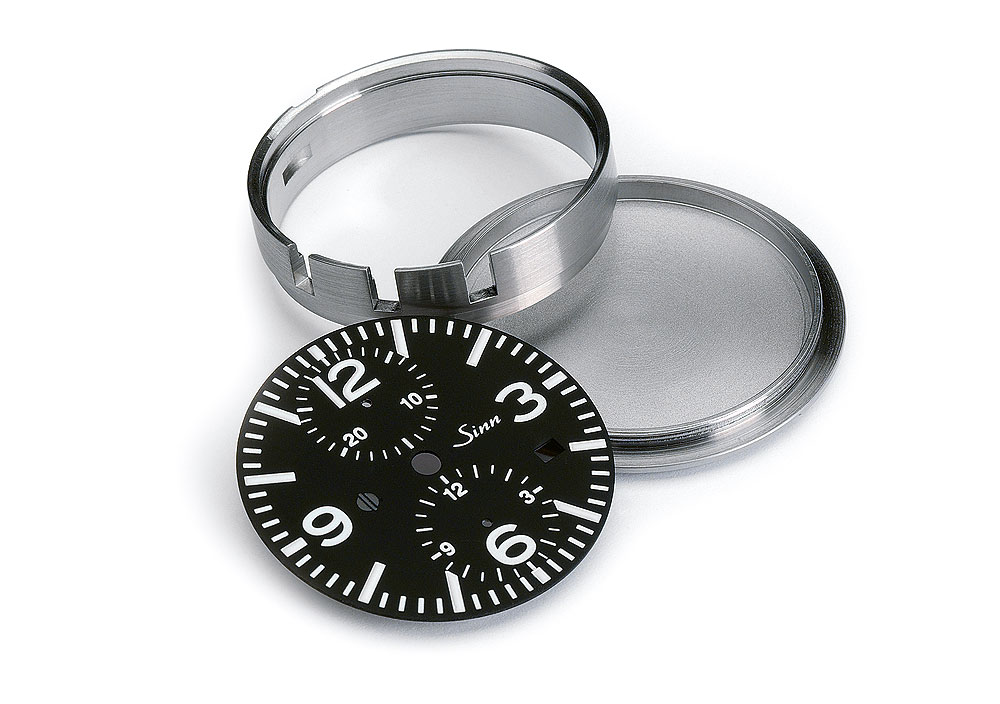
Magnetic Field Protection
Magnetic fields lurk everywhere: for example, in cellphones, loudspeakers and electric motors. They can disturb the rate behavior of watches because the hairspring is particularly sensitive to their influence. Modern movements are classified as “antimagnetic” if they do not deviate from correct timekeeping by more than 30 seconds per day when exposed to a magnetic field with an intensity of 4,800 A/m. But even the magnetic field surrounding an ordinary household magnet is four times stronger than that. Sinn found that 60 percent of all watches sent to its customer service department in Frankfurt had become magnetized and kept time imprecisely.
Sinn relies on a technique that was first developed for watches in the 1950s: an additional case made of magnetically soft material keeps magnetic fields away from the movement. Sinn’s protective shield usually consists of the dial, the movement-holder ring and an inner caseback. Watches equipped with this protection are undisturbed by magnetic fields up to an intensity of 80,000 A/m or 1,000 gauss.
Movement Modifications
Sinn doesn’t shy away from enhancing its movements if the modifications improve their functioning. Diapal technology is a good example. As we explained earlier, oil is a critical factor in mechanical watches. An especially vulnerable spot is in the escapement at the points of contact between the synthetic ruby pallet jewels on the lever and the steel teeth on the escape wheel. These parts strike against one another, which means that the oil here doesn’t last as long as it does in slide bearings located elsewhere in the movement. Insufficient oil at this spot has an extremely adverse effect on the accuracy of the rate. If the oil is absent, the watch won’t run at all after a few “oil-less” weeks have passed.

Sinn’s specialists haven’t yet invented an oil-free watch, but they have devised an oil-free escapement. Sinn began working to solve this problem in 1995. The term “Diapal” was coined during the first experiments using diamond rather than ruby pallets – and the name was kept. The pairing of diamond and steel improved the “dry” performance, i.e. without oil, but failed to achieve the amplitude values of a lubricated escapement. This became possible somewhat later, when Diapal technology was used in tandem with a nano-coating on the escape wheel. Nowadays Sinn arranges to have its escape wheels made from a special material. The lever with ruby pallets can remain unaltered. The duo with the new escape wheel runs without lubricant, but nonetheless has less friction than a conventional oiled pairing. The resulting amplitude is so high that Sinn must take countermeasures to reduce it.
In this technique, highly trained watchmakers join a pinion to the specially made escape wheel, which is manufactured from a special alloy, and then insert the ensemble into the movement. A Diapal watch can be identified by its anthracite-colored dial with black counters. All Diapal watches rely on the same caliber: an ETA Valjoux 7750, which has been modified so that rather than showing the day of the week, it indicates the time in a second time zone in 12-hour format.
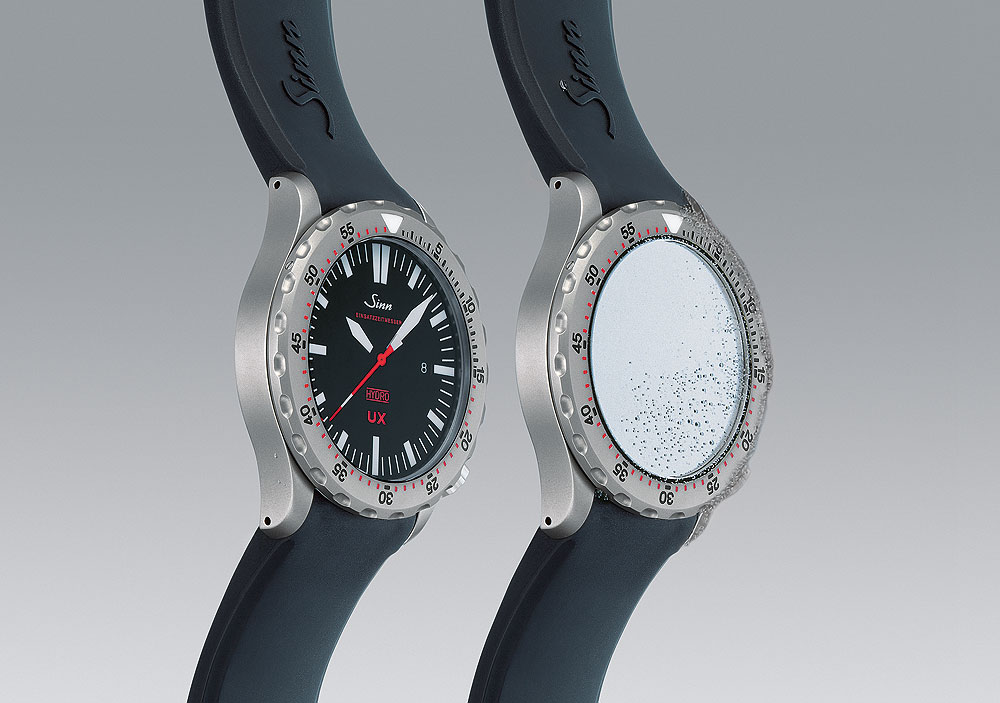
Also noteworthy is Caliber SZ01, which Sinn constructed based on the ETA Valjoux 7750 and which improves legibility. A special feature is that it’s equipped with a jumping 60-minute elapsed time hand, which sweeps its orbits from the center of the dial. This makes the elapsed minutes more legible than when shown on subdials.
There is plenty of work to do in the watchmakers’ atelier, where all movements are encased and all hands are inserted. In addition to modifying the base movements, these watchmakers assemble 14,000 watches annually. Schmidt proudly shows us another technology here: it reduces dust and thus lengthens the period during which customers can enjoy an accurately running watch. Each workstation is equipped with ionizers that rely on ozone to release dust adhering to case parts; the loosened specks can be blown off the surface with compressed air. Static electricity causes dust to cling so tenaciously to the components that pressurized air alone cannot fully free the parts from dust.
Tests and Certifications
Schmidt pursues unorthodox paths to test the functions of his watches and to certify the high developmental status of the techniques. He sends his divers’ watches to the DNV GL, an independent company that tests and certifies their pressure resistance, water tightness and insusceptibility to fogging and verifies that the timepieces satisfy the European standards for diving equipment. Furthermore, each divers’ watch is also tested at Sinn in Frankfurt at 125 percent of its rated pressure resistance.
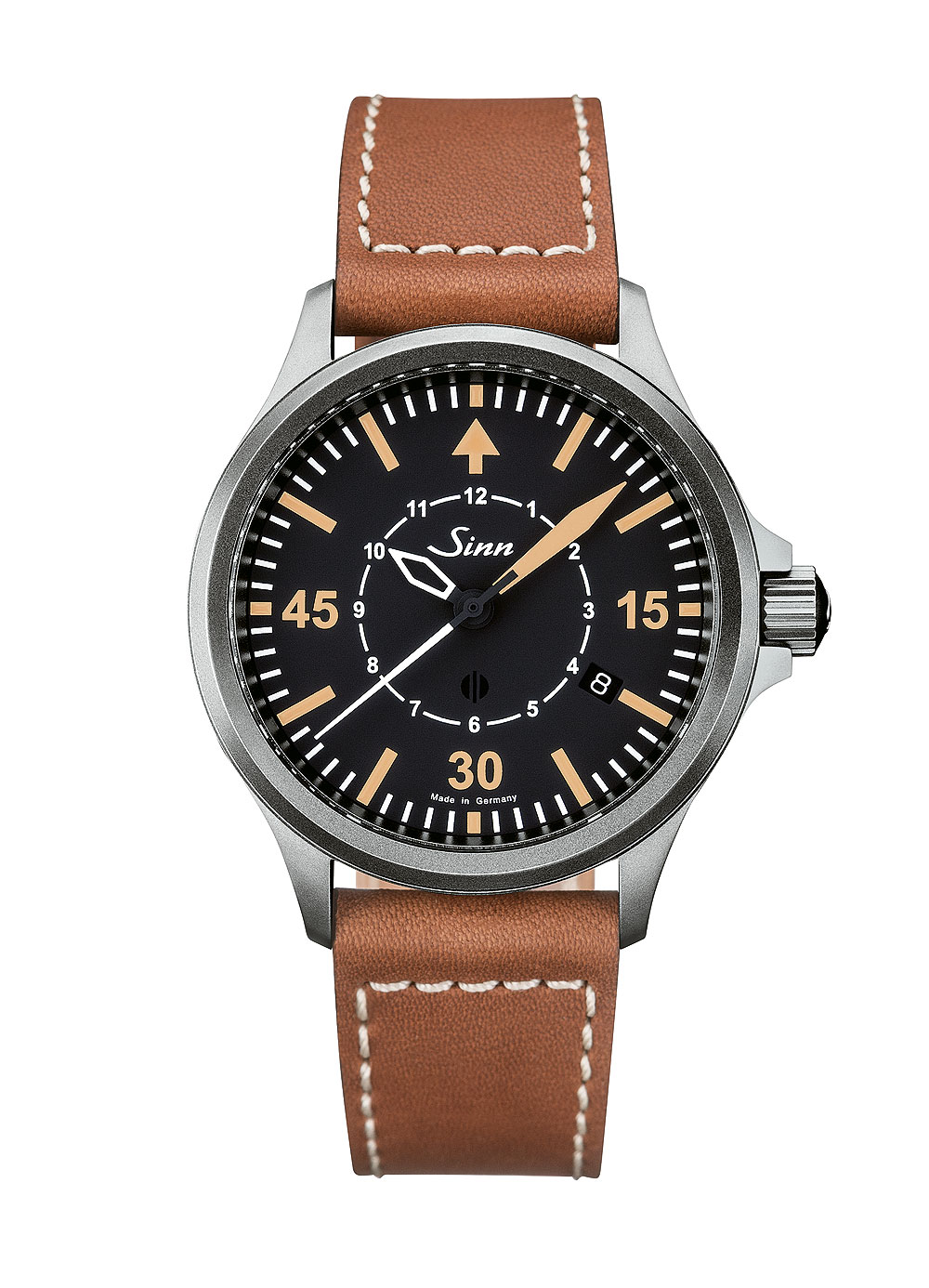
Gazing Into the Future
Sinn’s new headquarters in Frankfurt has more than 50,000 square feet of floor space, twice as much as the old location. While guiding our tour of the new site, Schmidt reported that Sinn has now been able to further increase its vertical range of manufacturing. He also emphasized that numerous other technologies are in the planning stages. The new building symbolizes the success that this engineer’s brand enjoys with its innovative technologies.

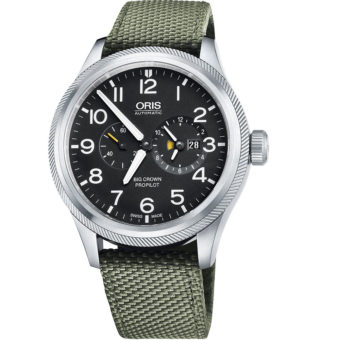
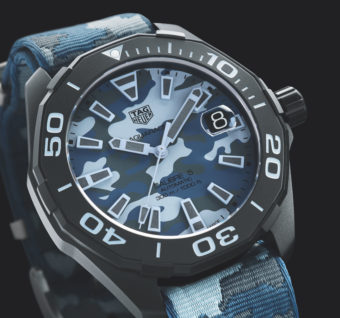
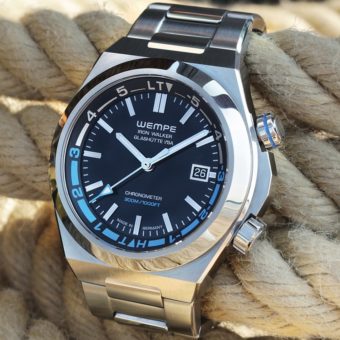
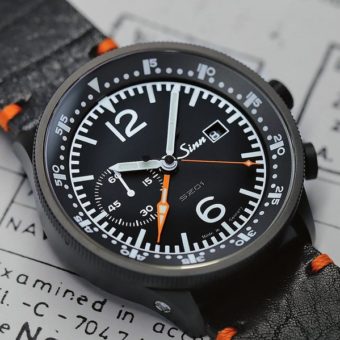
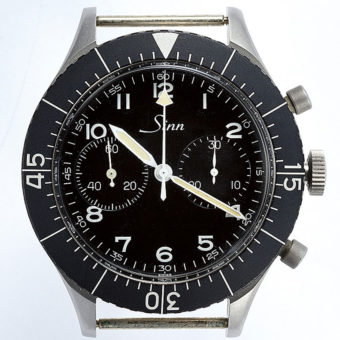
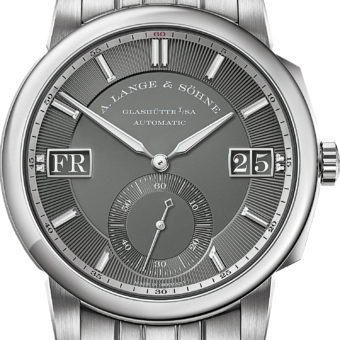
If I am correct, VDO bought not only JLC, IWC, but also Langhe & Söhne.
I am not a pilot, but I can’t help but to wonder.
If you fly at 12 000 meters (or below, like at sealevel) and an explosion tears open the cabin, doesn’t the pilot (s) have other things to worry about than broken wristwatches?
I think the real goal here was more about avoiding creating one more flying debris that could hurt cause the pilot harm (i.e. a flying piece of glass).